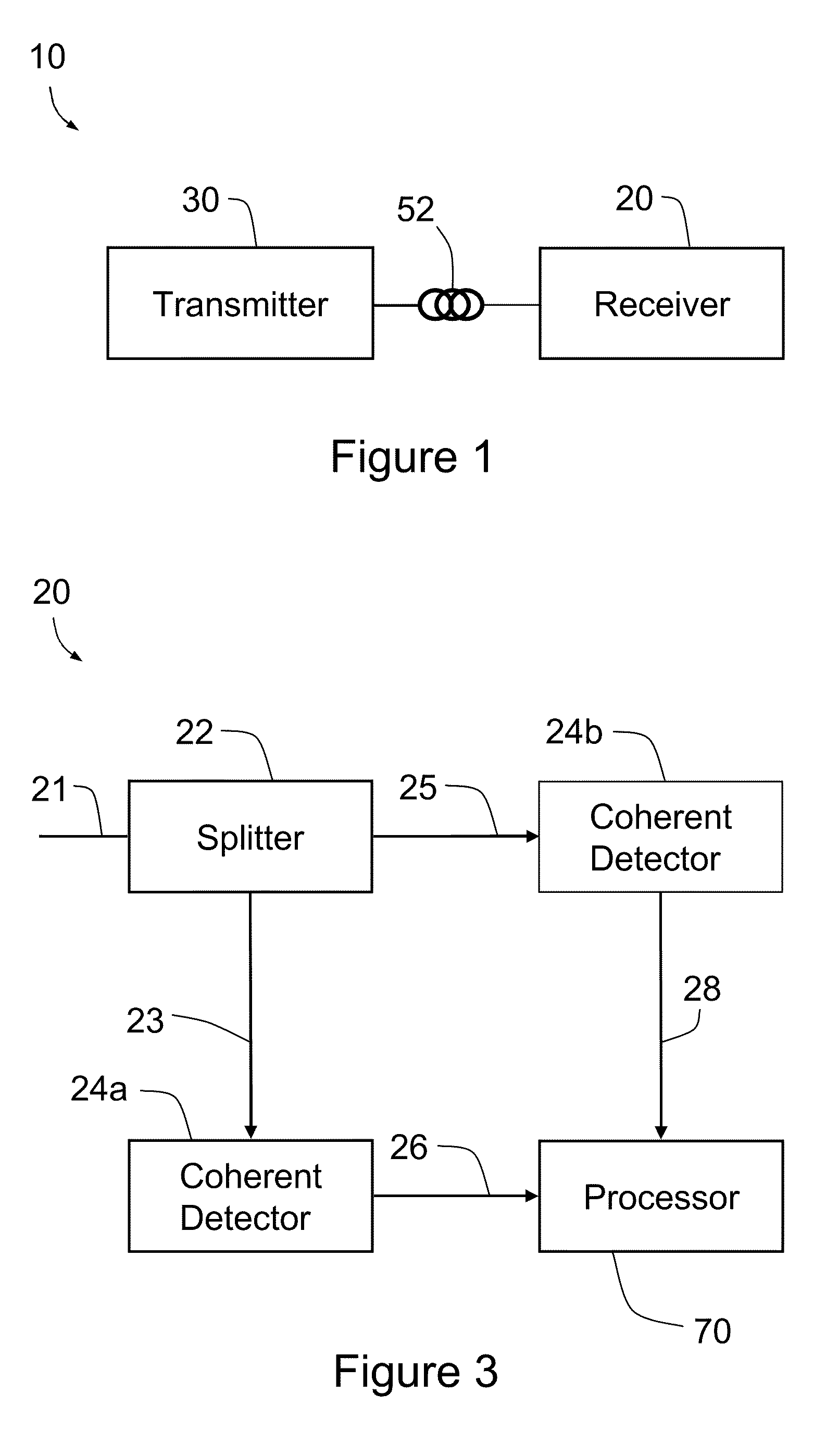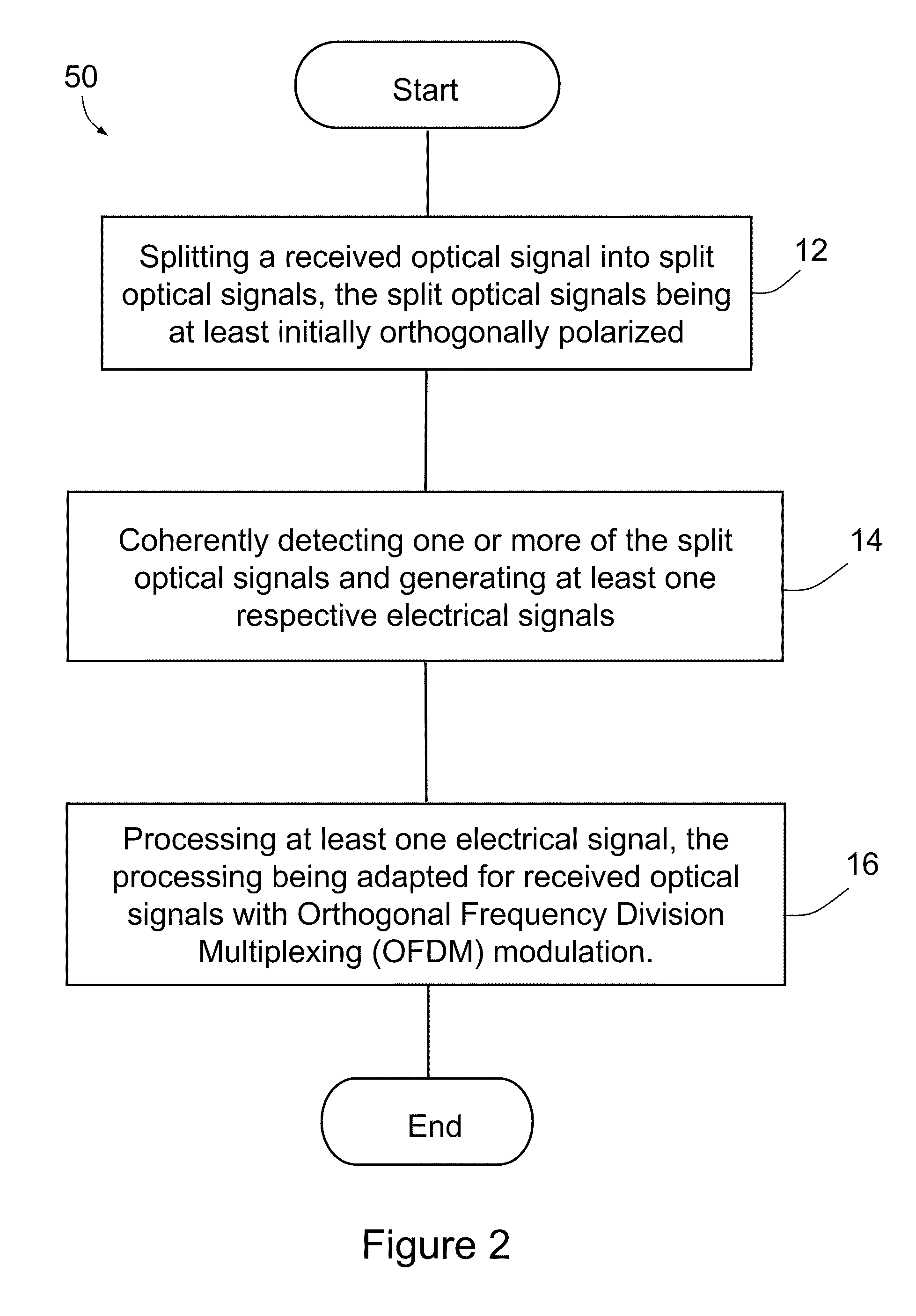Method and system for polarization supported optical transmission
a technology of optical transmission and polarization support, applied in the field of optical communication, can solve the problems of high-speed transmission system drastic pmd degradation, qpsk and similar formats, and cannot be used in much beyond 100 gbit/s, and achieve the effect of effective compensation of polarisation effects and double capacity
- Summary
- Abstract
- Description
- Claims
- Application Information
AI Technical Summary
Benefits of technology
Problems solved by technology
Method used
Image
Examples
Embodiment Construction
[0071]FIG. 1 is a schematic view of an optical transmission system generally indicated by the numeral 10. System 10 has an optical transmitter 30 and an optical receiver 20. Transmitter 30 and receiver 20 are connected by a waveguide such as an optical fiber 52. In some alternative embodiments some or all of optical fiber 52 may be replaced by free space propagation. Transmitter 30 generates optical signals having Orthogonal Frequency Division Multiplexing (OFDM) modulation. Typically each of the optical signals does not have an optical carrier tone. The signals travel along fiber 52 and are subsequently received by receiver 20. System 10 uses coherent detection, so the transmission scheme used is referred to herein as coherent OFDM (CO-OFDM).
[0072]FIG. 2 is a flow diagram of a method 50 implemented by receiver 20. Method 50 provides detection of the optical signal having OFDM modulation. In this embodiment, method 50 provides resilience against polarization, chromatic and nonlinear...
PUM
 Login to View More
Login to View More Abstract
Description
Claims
Application Information
 Login to View More
Login to View More - R&D
- Intellectual Property
- Life Sciences
- Materials
- Tech Scout
- Unparalleled Data Quality
- Higher Quality Content
- 60% Fewer Hallucinations
Browse by: Latest US Patents, China's latest patents, Technical Efficacy Thesaurus, Application Domain, Technology Topic, Popular Technical Reports.
© 2025 PatSnap. All rights reserved.Legal|Privacy policy|Modern Slavery Act Transparency Statement|Sitemap|About US| Contact US: help@patsnap.com



